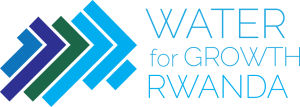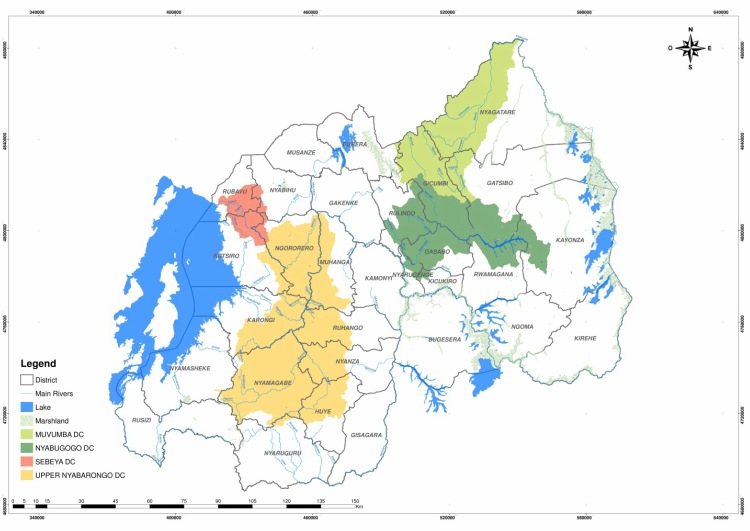In an effort to introduce integrated land and water management, the Government of Rwanda, through Water for Growth Rwanda, commenced the development of catchment plans. FutureWater supported this effort by using the WEAP framework to develop catchment models for four selected demonstration catchments. Subsequently, the WEAP framework was used to develop a water balance and water allocation tool for the entire country. Lastly, training was provided on using the four WEAP-C and WEAP-R models.
 In an effort to introduce integrated land and water management within hydrological units (catchments), the Government of Rwanda, through Water for Growth Rwanda, has commenced the development of catchment plans. Water for Growth Rwanda, a platform to promote improved, integrated management of Rwanda’s water resources (IWRM), is supported by the Embassy of the Kingdom of the Netherlands. The overall aim of the program is to “effectively manage water resources to contribute to sustainable socio-economic development and equitably improved livelihoods”. Important components of the program are:
In an effort to introduce integrated land and water management within hydrological units (catchments), the Government of Rwanda, through Water for Growth Rwanda, has commenced the development of catchment plans. Water for Growth Rwanda, a platform to promote improved, integrated management of Rwanda’s water resources (IWRM), is supported by the Embassy of the Kingdom of the Netherlands. The overall aim of the program is to “effectively manage water resources to contribute to sustainable socio-economic development and equitably improved livelihoods”. Important components of the program are:
- Research and capacity building on IWRM
- Implementation of IWRM principles for shared learning in four Demonstration Catchments
- The development of sustainable integrated water management plans
- Creation of an IWRM Investment Fund, also open to other financial contributors
FutureWater and eLEAF possess unique expertise and knowledge to undertake such a project. Our approach is client-centered, and the proposed tools are carefully selected based on the ease of use, flexibility towards the availability of data and having a strong focus on future scenario development.
Many Integrated Water Resources Management (IWRM) planning projects fail as a clear future focus is lacking. By combining local data sets and data obtained from remote sensing in hydrological models, information on crop transpiration, groundwater flows, recharge and runoff can be obtained. WEAP incorporates these values into a practical tool for water resources planning and policy analysis. This results in a more complete knowledge base on water resources availability.

First, Evapotranspiration (ET), Biomass Production (BP) and Biomass Water Productivity (BWP) maps will be produced for the whole country of Rwanda. After this, the WEAP framework will be used to develop four catchment models for the four demonstration catchments.
Subsequently, the WEAP framework will be used to develop for the entire country a water balance and water allocation tool. This WEAP-R will be used to evaluate various scenarios regarding water allocation. These models will be fed with data based on remote sensing, local data, and global data. The models will be setup for a 10 years’ reference and validation/calibration period (2006-2015) on a monthly base. For scenario analysis the models will be setup for a two 10 years’ period (2020 and 2050).
Lastly, training will be provided on using the four WEAP-C and WEAP-R models. The educational component will be integrated and will focus on enhanced understanding of the water balance and allocation issues.
Related publications
2017 - FutureWater Report 165
Water Balance and Allocation Modelling in Rwanda
Droogers, P., M. Kruisheer, F. de Boer, W. Terink, M. Andriessen, H. Pelgrum

